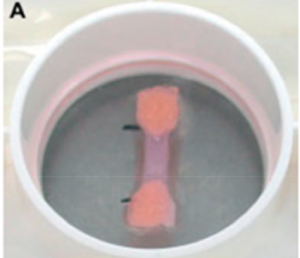Imagine 30 years from now; a world where mankind will be eating meat, without killing any animals. As a lover of steak, myself, I chose to do my research on this blog based on an informative article on animal grown meat caught my eye. The topic is based on how one can consume meat without having to grow an organism through a gruesome and lengthy process. A solution to vegan protests and the general public surrounding cruelty is associated with eating meat. By reading about cultivating meat in the lab, I came to believe that the next step is to cultivate meat without having to worry about cutting down masses of land. In addition to this, we don’t have to be concerned about destroying Earth’s fragile ecosystem. Animals release methane associated with livestock; this contribute to the ever-worrying climate change issue. Lab grown meat can very realistically solve many of the world’s problems. Before I explain, check out this informative short video about growing meat:

Cellular agriculture
Many start-ups are using their medical technology to be applied to meat production to not have to kill animals to produce meat. The field of cellular agriculture could potentially be compared to traditional agriculture, just like how clean energy is compared to fossil fuels. The United Nations stated that more greenhouse emissions are released by raising animals for food than all transportation types as a whole. The reasoning behind this is because growing animals take an enormous amount of water, land, oil and fertilizers to make meat. This is not even considering the effects of water removal, land removal, oil usage and fertilizer runoffs that can create many algae blooms and kill off ecosystems. With all of this in mind, it’s clearly important to find an important alternative to traditional agriculture.
How is cellular meat grown?
Interestingly enough, it’s not as complicated as one may think. The first step is to put a small portion of skeletal muscle, meat we eat. Then, we take a few satellite cells that are able to differentiate into skeletal muscle and start the cultivation process. If the cultivation process is similar to the internal processes of animal’s body, then the cells can start to divide exponentially and rapidly grow into muscle cells. The pace of which the cells divides, is that after nine weeks, you will have the amount of cells equivalent to a hamburger patty. This may seem a lot of time but it is a relatively new area in science and one that shows promise for future development.
Does lab grown meat taste like real meat
According to scientists, yes! In addition to this, the worries of intestinal pathogens such as E Coli, which are found in many meats and recalls won’t be a problem in cellular meat production. Finally, a solution that will solve the debate between vegetarians and meat lovers: lab grown meat.
written by: Brian Agafitei

 (
(